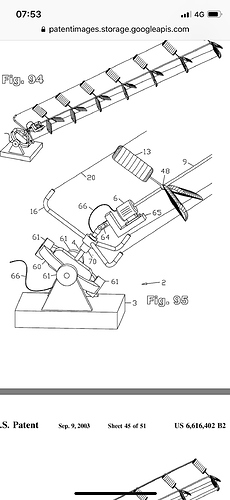Hi. I found time to read the paper, and would like to present some thoughts.
First I’d like to thank you for producing an intetesting paper based on an interesting idea.
1: Use of tether
In general tether is a limited resource for AWE. Using rotational AWE, tether force is spread among multiple tethers, necessary to spread the force evenly along the rotating ring. You have 8 or 16 kites, resulting in 8, 16 or 32 tethers between the ring and the ground ring.
Spreading tether force like this adds tether drag much like opposite of the positive scaling law for tether drag (ie for quadruple force only double tether diameter and drag necessary).
In addition, when using torque, the tether is mostly just statically keeping tension and only the twist component (coming from delta in your paper) is actually generating force in direct mode. For secondary mode this situation might be a lot better though.
For direct mode half of the tethers are producing while the other half are idle (moving downwind or upwind respectively), I guess as for any carousel like system.
All in all the «wasteful» use of tether compared to Flygen/yoyo wil probably result in lower altitudes attained and more pressure to scale huge in order to access higher altitude winds.
Having short tethers should lead to increased elevation angles and thus higher cosine losses.
Building a wind power plant for shorter tether lengths may well be worthwhile though.
2: Rotational speed when scaling
For the relatively small prototype you get a speed of 1 Hz. Once the kite ring scales, the crosswind speed should be constant if lift-to-drag remains constant. Thus the rotational speed should decrease with scale.
This is a problem because transfer of energy is proportional with rotational speed. The torque is limited by geometry and kite pull, suggesting that a gearbox could be useful though probably infeasible.
3: Secondary mode
I dont fully understand this, but it seems to me that the travelled distance is quite short while the amount if tension difference between two opposite tethers has some practical limitations, thereby limiting the amount of energy that may be extracted. Perhaps with scale secondary mode could become more useful?
4: Depower
As the generator must soak up generated energy without getting delta ~ 180 degrees, there seems to be a requirement to depower the wings on the kite side. I think this cannot be avoided in practice. this means more control either through additional tethers or electric actuators on the wings. Passive solutions might also exist for this.
(still reading…)
Please accept these comments as constructive feedback and not an attempt to kill the idea. At least for me, there seems still seems like there might be a working concept in here…
